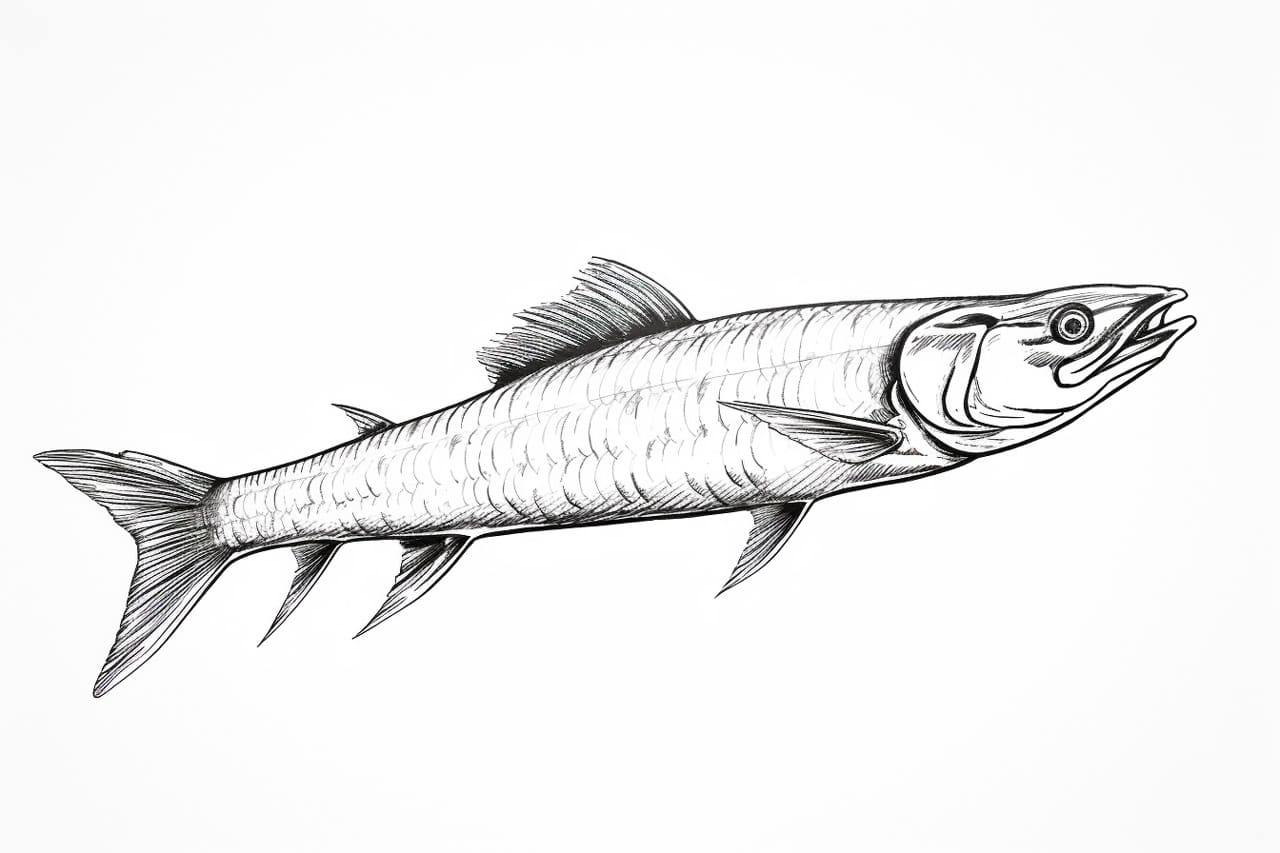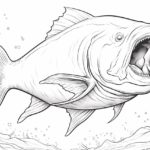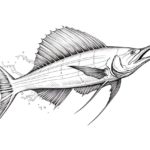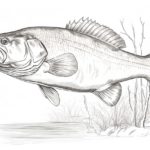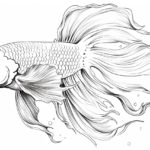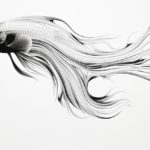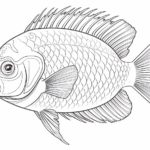Drawing a barracuda is an exciting artistic challenge that allows you to capture the sleek and predatory nature of this formidable fish. With its razor-sharp teeth, streamlined body, and piercing eyes, the barracuda is a fascinating subject for artists looking to explore the beauty and power of marine life. In this guide, we will delve into the techniques and tips you need to create a stunning and realistic depiction of a barracuda, from capturing its dynamic movement to highlighting its distinctive features. So grab your pencils and paper, and let’s dive into the world of drawing this iconic ocean predator!
Materials Required
To draw a Barracuda, you will need the following materials:
- Drawing paper or sketchbook
- Pencils of varying grades (2B, 4B, 6B)
- Eraser
- Sharpener
- Drawing pens or fine liners (optional for outlining)
- Reference image of a Barracuda
- Colored pencils or markers (optional for adding color)
- Blending tools such as blending stumps or tortillons (optional for shading)
- Ruler (optional for drawing straight lines or measuring proportions):
How to Draw a Barracuda: a Step-by-step Guide
Step 1: Gather Materials
Gather all the necessary materials for drawing a Barracuda. You will need paper, a pencil, an eraser, and optional coloring tools like colored pencils or markers.
Step 2: Research and Reference
Look up reference images of Barracudas to get a clear idea of their anatomy and features. Pay attention to details such as their long body, sharp teeth, and distinctive fins.
Step 3: Sketch the Body
Start by lightly sketching the basic shape of the Barracuda’s body using simple lines and shapes. Focus on capturing the elongated and streamlined body structure of the fish.
Step 4: Add Details
Add details such as the Barracuda’s sharp teeth, large eyes, and prominent fins. Take your time to carefully observe the reference images and incorporate these features into your drawing.
Step 5: Refine the Outline
Once you have the basic features in place, go over the outline of the Barracuda with firmer lines to define the shape more clearly. Pay attention to the curves and angles of the fish’s body.
Step 6: Erase Unnecessary Lines
Use an eraser to carefully erase any unnecessary or overlapping lines from your initial sketch. This will help clean up the drawing and make the Barracuda’s features stand out more.
Step 7: Add Texture and Shading
To give your Barracuda drawing more depth and realism, add texture to the fish’s scales and fins. You can also add shading to create a sense of light and shadow, enhancing the three-dimensional quality of your drawing.
Step 8: Finalize Details
Take a final look at your drawing and make any necessary adjustments or additions to ensure that all the details are accurately represented. Fine-tune the features of the Barracuda to make it look more lifelike.
Step 9: Optional Coloring
If you choose to color your Barracuda drawing, use colored pencils or markers to add realistic colors to the fish. Refer back to your reference images to accurately depict the Barracuda’s coloring and markings.
Step 10: Sign and Display
Once you are satisfied with your Barracuda drawing, sign your artwork and consider displaying it in a frame or sharing it with others to showcase your artistic talent.
Conclusion
Fantastic job on your Barracuda drawing! Your attention to detail and skill in capturing the essence of this powerful and sleek fish is truly impressive. Keep practicing and exploring different techniques to continue honing your craft. Remember, art is a journey of growth and self-expression, so embrace the process and enjoy the satisfaction of creating something beautiful. Keep up the great work and continue to let your creativity flow!
Fun Facts About Barracudas
Certainly! Here are some fun and interesting facts about Barracudas:
- Barracudas are known for their impressive speed and agility in the water, capable of reaching speeds of up to 36 miles per hour.
- These predatory fish have a fearsome reputation due to their sharp teeth and aggressive hunting behavior, but they are not typically a threat to humans unless provoked.
- Barracudas have a unique appearance with long, slender bodies, sharp fang-like teeth, and a silver or gray coloration that helps them blend in with their surroundings.
- They are opportunistic feeders, preying on a variety of smaller fish, crustaceans, and even other barracudas. They are known for their ambush hunting style, using their speed to surprise and catch their prey.
- Barracudas are found in tropical and subtropical waters around the world, usually near coral reefs, mangroves, and seagrass beds where they can find ample food sources.
- Despite their aggressive reputation, barracudas are also preyed upon by larger predators such as sharks, dolphins, and even larger barracudas.
- Barracudas are able to change color to some extent, allowing them to better camouflage themselves in different environments and potentially confuse their prey.
- Some species of barracudas are known to form schools, especially when hunting or migrating, providing them with safety in numbers and increasing their chances of catching prey.
- Barracudas are important to marine ecosystems as top predators, helping to regulate the population of smaller fish and maintain a healthy balance in the food chain.
- In some cultures, barracudas are considered a prized game fish for sport fishing due to their speed, strength, and challenging nature when caught.
Suggestions for Scenes and Settings for Barracuda Drawings
Certainly! Here are some specific suggestions for scenes and settings for drawings of Barracuda:
- Underwater Coral Reef: Illustrate a Barracuda swimming among colorful coral reefs, with rays of sunlight filtering through the water.
- Shipwreck: Show a Barracuda lurking near a sunken shipwreck, with rusty metal and debris creating an eerie atmosphere.
- Tropical Lagoon: Depict a Barracuda gliding through crystal clear waters of a tropical lagoon, surrounded by lush greenery and vibrant fish.
- Night Dive: Capture the mysterious beauty of a Barracuda hunting under the cover of darkness, with bioluminescent creatures illuminating the scene.
- Coastal Rock Formation: Draw a Barracuda navigating through rocky underwater terrain along a coastal cliff, with waves crashing above.
- Open Ocean: Create a sense of vastness by drawing a Barracuda swimming in the open ocean, with only the endless blue expanse stretching out in all directions.
- Seagrass Beds: Show a Barracuda blending into its surroundings in a peaceful seagrass bed, with small fish darting around.
- Cavern Exploration: Illustrate a Barracuda exploring a dark underwater cavern, with mysterious shadows and hidden crevices.
- Artificial Reef: Depict a Barracuda circling an artificial reef structure, such as a sunken ship or concrete structure, teeming with marine life.
- Kelp Forest: Capture the Barracuda’s sleek form gliding through a dense kelp forest, with shafts of light penetrating the canopy above.
These suggestions offer a variety of interesting and dynamic settings for drawings of Barracuda, each providing a unique visual context for showcasing the beauty and power of these fascinating creatures.

